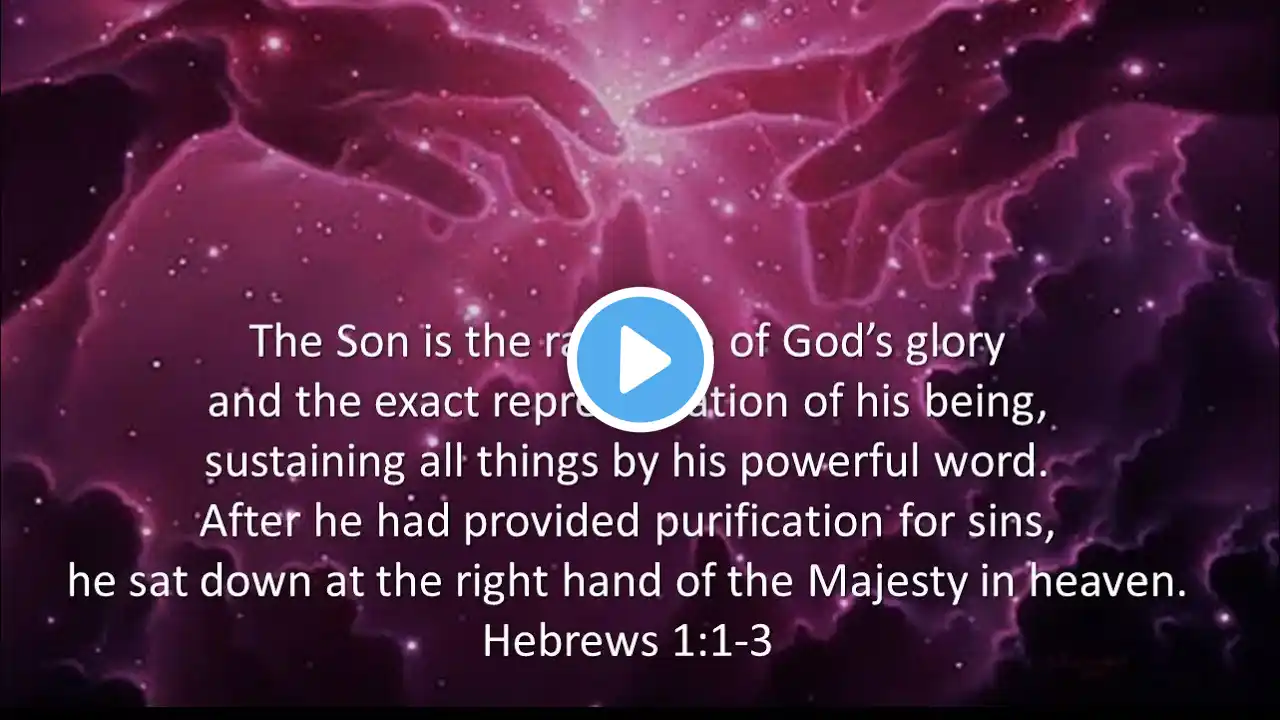![히브리서 1-13장 [새번역] Epistle to the Hebrews [그는 하나님의 영광의 광채시요, 하나님의 본체대로의 모습이십니다. 그는 자기의 능력 있는 말씀으로 만물을]](https://krtube.net/image/tKSvBho2hHk.webp)
히브리서 1-13장 [새번역] Epistle to the Hebrews [그는 하나님의 영광의 광채시요, 하나님의 본체대로의 모습이십니다. 그는 자기의 능력 있는 말씀으로 만물을]
Author, Date, and Recipients The author of Hebrews is unknown He knew Timothy (13:23) He was not an eyewitness of Jesus (see 2:1, 3) The letter was probably written before A D 70 Early manuscripts bear the title “To the Hebrews,” which reflects the ancient assumption that it was written to Jewish Christians as well as Gentile Christians who previously had been drawn to the Jewish religion The author knew his readers and wanted to see them again (13:19) Theme Jesus Christ is greater than any angel, priest, or old covenant practice Christians must not forsake the great salvation that Jesus has brought about They must hold on by faith to the true rest found in Christ, and they must encourage others in the church to do the same Purpose, Occasion, and Background Hebrews has two primary purposes: to encourage Christians to endure, and to warn them not to abandon their faith in Christ These warning passages appear throughout the book (2:1–4; 3:7–4:13; 5:11–6:12; 10:19–39; 12:1–29) The author encourages faithfulness, love, and sound doctrine He does so by carefully teaching the OT in light of God’s revelation in Jesus Christ The author shows the superiority of Christ and his new covenant over angels, Moses, the OT priesthood, and the OT sacrificial system These are so inferior to Christ that it is futile to return to them—or to go anywhere else Rather, believers should hold fast to their faith, because that faith is grounded in the most superior revelation The background of such exhortations must have been the readers’ need to continue enduring amid persecution and the trials of life (e g , ch 12) They appear to have grown less attentive to Christian instruction (5:11–14), and some apparently have ceased regular attendance at their meetings (10:25) The author reminds them of their past faithfulness and love despite persecution (10:32–34) Ultimately, the author’s words of encouragement and exhortation are rooted in his teaching about Jesus Christ The Son of God became the heavenly high priest, who offered himself as a sacrifice once for all Christ obtained salvation for all who approach him in faith (6:1; 11:6; compare 4:2), and such faith perseveres until it receives the promised eternal reward (6:12; 10:22, 38–39) Key Themes Jesus is fully God and fully man (1:1–14; 2:5–18) Jesus, the Son of God, reveals God the Father He is the creator and he sustains all creation (1:1–14) Jesus is the eternal high priest As a man, he sympathizes with human weaknesses, and he offered himself as the perfect sacrifice for sin (1:3; 2:10–18; 4:15–16; 9:11–10:19) Jesus is superior to angels, to Moses, to the Mosaic covenant, to the earthly tabernacle, and to the priesthood (1:4–2:18; 3:1–6; 5:1–10; 7:1–10:18) All humanity faces eternal judgment for sin (4:12–13; 9:27–28; 10:26–31) Faith is necessary to please God and to participate in his eternal salvation Faith requires confidence about the unseen realities of God and his promises Such faith produces perseverance (6:1; 10:22, 38–39; 11:1–40) Perseverance is necessary in the Christian life; believers are warned against a lack of endurance (2:1–4; 3:7–4:13; 10:19–39; 12:1–29) God’s promises are trustworthy, including his promise of eternal salvation (6:13–20) With the coming of Jesus Christ, the last days have begun They will be completed when he returns (1:2; 9:9–28; 12:22–29) Outline Jesus Is Superior to Angelic Beings (1:1–2:18) Jesus Is Superior to the Mosaic Law (3:1–10:18) Call to Faith and Endurance (10:19–12:29) Concluding Encouragements and Remarks (13:1–25)

















